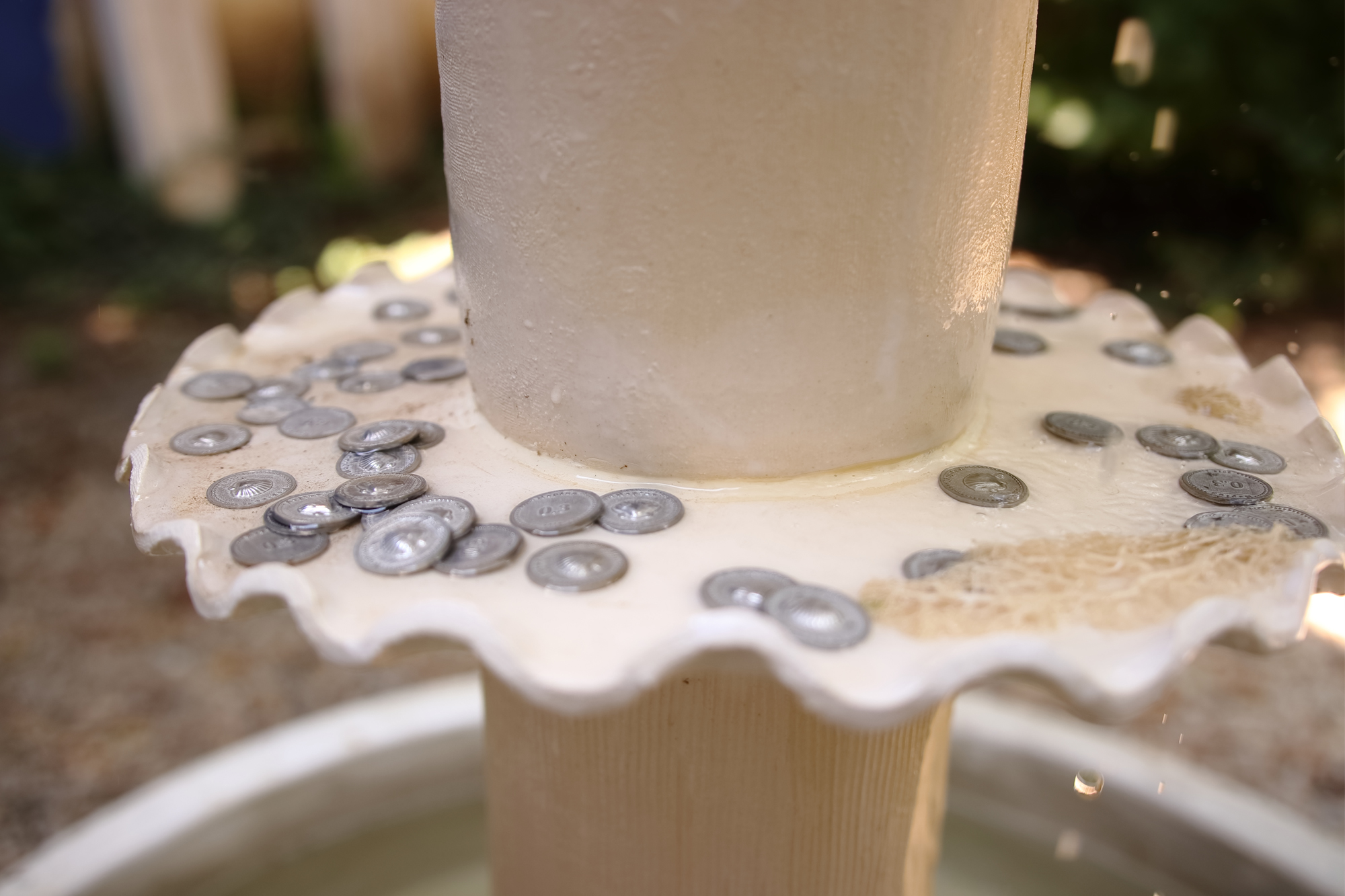Monument-Fountain built în memory of the Neptune Battle’s victims/ Fântâna monument ridicată în memoria victimelor bătăliei de la Neptun
140x97x97 cm
Ceramics, fibre glass, synthetic plants, water recirculation pump, metal coins
2021
The Monument-fountain dedicated to the memory of the victims of the Battle of Neptune is the most important work in the Battle of Neptune project.
Monument-fountain (built in memory of the victims of the Neptune Battle) is an installation – symbol of the Neptune Battle that aims to describe in an ironic key the delicate state of the central emotion revolving around the Neptune Battle: human anger. The installation draws its inspiration from archaeological facts and mythology.
In Romanian folk culture water has regenerative powers, absorbs evil, and it is used in different rituals (carefully placed at the head of a newborn, sometimes brought even from the Danube river). This understanding of water’s powers (healing and absorbing evil) is present in the fountain’s water, describing the hope for a better future in which aggression and futile anger are absorbed and the spark of hope is in the wish the viewers enable themselves to feel in a simple coin toss in the water.
The animal shape at the top of the fountain is a fantastic animal reminiscent of Asian elephants (a symbol of prosperity) but at the same time inspired by the shape of a hedgehog. This animal is controversial in Romanian culture being a complex symbol.
The hedgehog exercises his creative power over the earth (he makes more earth) and under the earth (he lies beneath it, wrinkling it and making mountains, valleys, hills, ravines); the earth from the beginning of the world is straight and smooth and cannot hold water or lead it, which is why it was barren, dry, arid and useless land for man. Giving birth to the forms of relief, the hedgehog makes possible, in mythological plan, life itself, the movement, the transformation of the world. It’s attributes connect him to the mythological archetype of the civilizing hero.
In Romanian folklore it appears in two main hypostases: it is either the cause of the cosmogonic error, or its remedy. When he errs in building the world, the hedgehog does it either out of carelessness or cunning, out of it’s desire to deceive God. When it corrects the cosmogonic error, it acts either by wise counsel or by a concrete deed. It’s placement on top of the fountain aims to represent this type of influence. The use of ceramic as the main material sends the message of discreet and delicate state of power, madness and anger.



